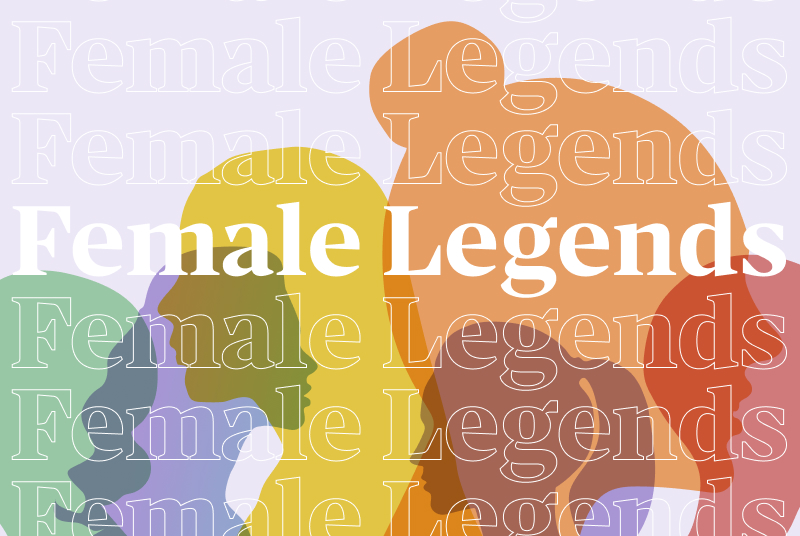We’re outspoken supporters of strong women here at FSM. Fully three-quarters of our team is made up of women. But it wasn’t that long ago that women in marketing – or advertising, as it was called – were a rarity.
We dove into our favorite pastime, research, and dug up stories of a few ladies who helped shape our industry over the course of the 20th century. You’ve probably never heard of most of them – we hadn’t, and this is our bread and butter! But the idea of women’s contributions being written out of history is so last century – we couldn’t just let it be.
Here are a few brief tidbits about some of the women who laid the groundwork for the rest of us to build upon.
Early Adapters
Madam C. J. Walker
Madam C. J. Walker embodied the American Dream. The first free child born to formerly enslaved parents in the 1860s, she was orphaned at age 7, married at 14 and widowed by the time she was 20. A scalp disorder made most of her hair fall out, and the available products for Black hair made by white companies didn’t work for her. So she created the “Walker system” of hand-crafted lotions, pomades and combs tailored to Black hair and skin. She sold them directly to other Black women, eventually creating an army of saleswomen she called “beauty culturists” to sell on her behalf. This pioneered a new model of entrepreneurship that empowered women both economically and socially.
By the time of her death in 1919, the Madame C.J. Walker Company employed over 40,000 people, many of them Black women. She founded a beauty school and factory in Pittsburgh and went to great lengths to promote female talent – even stipulating in her company charter that only a woman could be its president. Mme Walker, herself, was the first female American millionaire. Her prescient marketing strategies included a personal touch and an emphasis on the health of her customers.
Helen Landsdowne Resor
Helen Landsdowne Resor was ahead of the curve on many fronts. She started out as the very first female copywriter to work for J. Walter Thompson in 1906. After a promotion that put her in charge of creating advertising for the women’s market, she developed a shocking campaign for the Woodbury Soap Company. Her tagline, “A Skin You Love to Touch,” signaled the first use of sex appeal in advertising. It was incredibly successful for some 30 years.
Landsdowne Resor’s contributions to our collective good include bringing in then-unknown Norman Rockwell as an agency illustrator and pioneering ‘advertorials’ that promote products while resembling editorial articles.
Helen Rosen Woodward
Helen Rosen Woodward left her mark on both the marketing industry and the world of labor unions. In 1907, she began a long career in advertising with prominent women’s magazines, like McCalls and Women’s Day. She rose through the ranks from the steno pool to become the very first female account executive in U.S. history. She was also active in the Women’s Trade Union League, encouraging female workers to form unions to protect their rights and safety. The quote most widely attributed to Rosen Woodward is: “Advertising is what you pay for, publicity is what you pray for.”
Mid-Century Image-Makers
Eileen Ford
Eileen Ford shaped modern beauty standards more than perhaps any other person. She and her husband, Jerry, founded the Ford Modeling Agency in 1946. The careers of a staggering number of luminaries began at Ford, including Jane Fonda, Brooke Shields and Martha Stewart – who began modeling at the tender age of 15. In the early 1950s, Ford discovered and promoted the very first “supermodel,” Dovima – whose full name was Dorothy Virginia Margaret Juba and who set the bar for mid-century elegance and style in the designs of Yves St. Laurent before he was a household name. Ford eventually parlayed her eye for fashionability into a game-changing era some three decades later with a posse of supermodels, including Christie Brinkley, Lauren Hutton, Jerry Hall and Naomi Campbell.
Herta Herzog
Herta Herzog focused on the mind of the consumer, rather than the superficiality of physical beauty. After World War II, Herzog introduced the idea of qualitative market research to Madison Avenue. She was one of the first to use “motivational research,” or a deep dive into the reasons behind why people buy certain products, saying it used “the techniques of healing to figure out the secrets of selling.” At the McCann-Erickson and Jack Tinker & Partners agencies in New York, Herzog developed the first focus group and set the stage for most of our modern marketing techniques.
Mary Wells Lawrence
Mary Wells Lawrence was the OG Girlboss. This shy Youngstown, Ohio native started out writing ad copy for a department store in her hometown and transferred that skill to Macy’s New York before embarking on agency life. In the 1960s at Jack Tinkers & Partners, she came up with the “Plop, plop, fizz, fizz” campaign for Alka Seltzer and transformed drab Braniff airlines into a colorful, youthful brand with the slogan, “The End of the Plain Plane.” The agency refused to promote her because “a woman could not win acceptance as a president” – so she left and started her own agency, Wells Rich Greene. With groundbreaking ideas like the still-resonating “I ♡ NY” campaign of 1977, Wells Lawrence became the first female CEO of a company listed on the NYSE and the industry’s highest-paid executive, male or female. She retired in 1990, selling her agency for $160 million, and died in May 2024.
Caroline R. Jones
Caroline R. Jones blazed trails for women of color in the 1960s. She was the first Black copywriter at J. Walter Thompson agency, hired right out of college, and eventually earned the title of Creative Director there. She left in 1968 to help found Zebra Associates, one of the first Black-owned ad agencies in the country, where she became the first Black female VP of a major agency. In 1977, she co-founded Mingo-Jones Advertising where ads aimed at Black consumers made the crossover to mainstream audiences, like the Kentucky Fried Chicken “We Do Chicken Right” campaign. Despite her success with other high-profile clients like McDonald’s, American Express, the U.S. Postal Service and Toys”R”Us, she was denied induction into the Advertising Hall of Fame due to racial bias.
The Age of Shattering Conventions
Shirley Polykoff
Shirley Polykoff broke records with her firsts. She started out as a copywriter for Harper’s Bazaar magazine and a few NYC clothing stores. Then she landed a job at Foote, Cone & Belding agency where she would change advertising history. Until Polykoff came up with the slogan “Does She…or Doesn’t She?” for a Clairol hair dye campaign in 1956, women often went to great lengths to hide the fact that they tinted their tresses. Her words conveyed the idea that this product was so good, no one would know for certain. Sales skyrocketed. Buoyed by that success, Polykoff achieved the rank of Executive Vice President and Creative Director at FCB, then left in 1973 to start her own agency. In 1980, she became the first living woman to be inducted into the American Advertising Hall of Fame.
Ilon Specht
Ilon Specht harnessed deep anger to upend patriarchal advertising norms. As a copywriter for McCann-Erickson agency in 1973, she came up with the concept and tagline “Because I’m Worth It” for L’Oreal Preference hair color. Her male colleagues wanted to keep it more traditional with a man’s voiceover, but commercials with first a female model then a series of famous women (Cybill Shepherd, Meredith Baxter, Gwen Stefani, Kate Winslet) stating the line became the brand’s mainstay for decades. Her revolutionary idea of women recognizing their own value captured the spirit of the feminist movement. She went on to create successful campaigns for other brands, including Life cereal and Underalls pantyhose. Specht died in April 2024 after reflecting on the creation of her iconic L’Oreal tagline; “I was so angry when I wrote it. I was not writing an ad about looking good for men. It’s about caring for people. Because we’re all worth it or no one is worth it.”
Tina Brown
Tina Brown called the sexism she encountered at the helm of the Conde Nast media conglomerate from 1979-2001 “the water we swam in.” As the formidable editor-in-chief for Tatler, Vanity Fair, The New Yorker and Talk magazines, her nickname was “Stalin in heels.” Her response? Winning. She took each publication from dwindling readership to buzz-worthy profit margins. In 2008, she launched the digital news site The Daily Beast, which won journalism awards in 2012 and ‘13. She also founded Women in the World in 2009, a journalistic platform that hosted a decade of Lincoln Center summits focused on female speakers like Hillary Clinton, Queen Rania, Madeleine Albright and Oprah Winfrey. She continues to author books, host podcasts and elevate women’s stories.
A Brave New Century
Today’s marketing landscape looks a lot different than it did a century ago – or even two decades ago! And, thankfully, so does the state of working women. There are thousands of women contributing to our industry in a multitude of ways, from copywriting and graphic design to coding and web design to leadership positions at every level.
And women continue to shape our collective culture in the most memorable ways:
Linda Kaplan Thayer gave us the Aflac duck, the earworm jingle for Toys R Us and the titillating “Yes, yes, yes!” campaign for Herbal Essences shampoo. Susan Credle created the M&M “spokescandies” and the Allstate “Mayhem” television commercial campaign featuring Dean Winters.
Whether it’s Linda Boff using strategic storytelling to breathe new life into GE’s branding, Sally Hogshead branding a personal-brand measurement test or Ann Handley gently nurturing our humanity in the age of AI, women are, indeed, the future of marketing – and they’re way more visible and accepted than those first ladies of our history.






